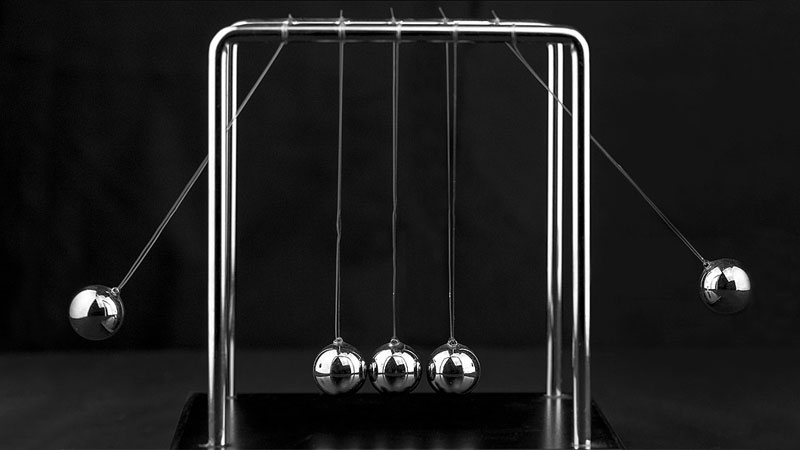The different types of collisions are more of an interest to the scientific community; in particular, nuclear physicists. The collisions spoken of here, most often refer to those that happen on a microscopic level requiring very powerful microscopes. These have to do with molecules, atoms, and sub-atomic particles.
These collisions can cause a change in kinetic energy via: a loss in kinetic energy, an increase in kinetic energy, or no effective kinetic energy loss at all.
These types of collisions are known as inelastic collision, perfectly inelastic collision, elastic collision, and super elastic collision. You can read about each of them below.
Types of Collisions
1. Inelastic Collisions
In scientific terms, an inelastic collision is the result of the reduction of kinetic energy after a collision between two particles. Before the collision, both particles had kinetic energy, after the collision, their respective kinetic energies were reduced.
The kinetic energy contained in particles is converted into vibrations where energy builds up and heat is given. This causes a deformation in the particles’ physical structure. The build-up of heat signifies the conversion of energy from kinetic to heat; thereby a loss of kinetic energy
While some inelastic collisions do no lasting damage, a few inelastic collisions destroy a particle. Nuclear physicists use these kinds of inelastic collisions to figure out the internal properties of microscopic particles.
One particle, called incoming, strikes into another particle, called victim. The result is that the victim particle’s nucleus is torn apart, thereby giving scientists the opportunity to view the victim’s internal structure.
2. Perfectly Inelastic Collisions
Perfectly inelastic collisions occur when two colliding particles combine. The maximum loss of kinetic energies is translated into the physical bonding.
Perfectly inelastic collisions are an extreme of inelastic collisions. That does not mean that they are rare. Gaseous and liquid particles often undergo perfectly inelastic collisions.
3. Elastic Collisions
This type of collision occurs only when there is no loss in kinetic energy for both particles involved in the collision. The collision is such that no energy was converted into sound or heat; thus allowing both particles to retain their previous energies.
As an example, atoms experience elastic collisions. On the other hand, molecules of liquids and gases, exchange energies during collisions, making them undergo inelastic collisions and perfectly inelastic collisions.
4. Super Elastic Collisions
Super elastic collisions are a mystery at the moment. Scientists are unsure of what makes a super elastic collision happen. But, when a collision causes a loss of energy, isn’t it only right that some collisions increase energy?
This is exactly the effect of a super elastic collision. Again, the why’s and how’s are unknown, but it was observed to happen. This collision was seen during a coronal mass ejection. Two magnetized plasmoids collided and caused a kinetic energy increase of 6.6%.
Why is this not observed more often here? Liquid and gas particles often just combine in perfectly inelastic collisions. As a result, solid particles are observed the most by science.
Magnetized plasmoid is a totally different matter altogether. Plasma is another form of matter, like solids, liquids, and gas.
According to science, plasma is the most abundant material in the universe. It makes up a very huge part of our sun. We all know that the sun creates and ejects enormous quantities of energies, all the time.
Magnetized plasmoids can increase energy through collisions. Maybe this is part of the sun’s energy generating mechanism? There are no answers really. Right now, all science can do is peer at the surface of the sun and speculate.
Conclusion
So how do we tie all these different types of collisions together? A good example is baseball. At that moment when the bat collides with the ball, different things occur. The ball doesn’t stay round. The shape is deformed. At this point, kinetic energy is converted into potential energy.
When the ball and bat collide, the energy occurs in several forms: kinetic, sound, and heat. If all energy were converted into kinetic energy, it would be an elastic collision. If there were some loss of energy, it is called an inelastic collision.
If all energy converted to sound or heat, with total loss of kinetic energy, that would be a perfectly inelastic collision. This leaves out super elastic collisions. Among the different types of collisions, this one still has to be explained.

